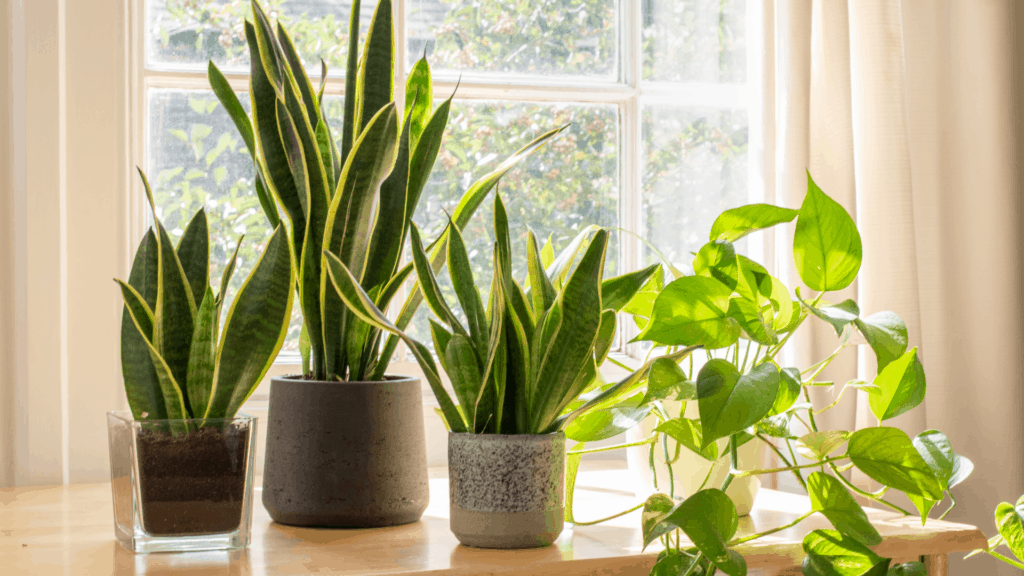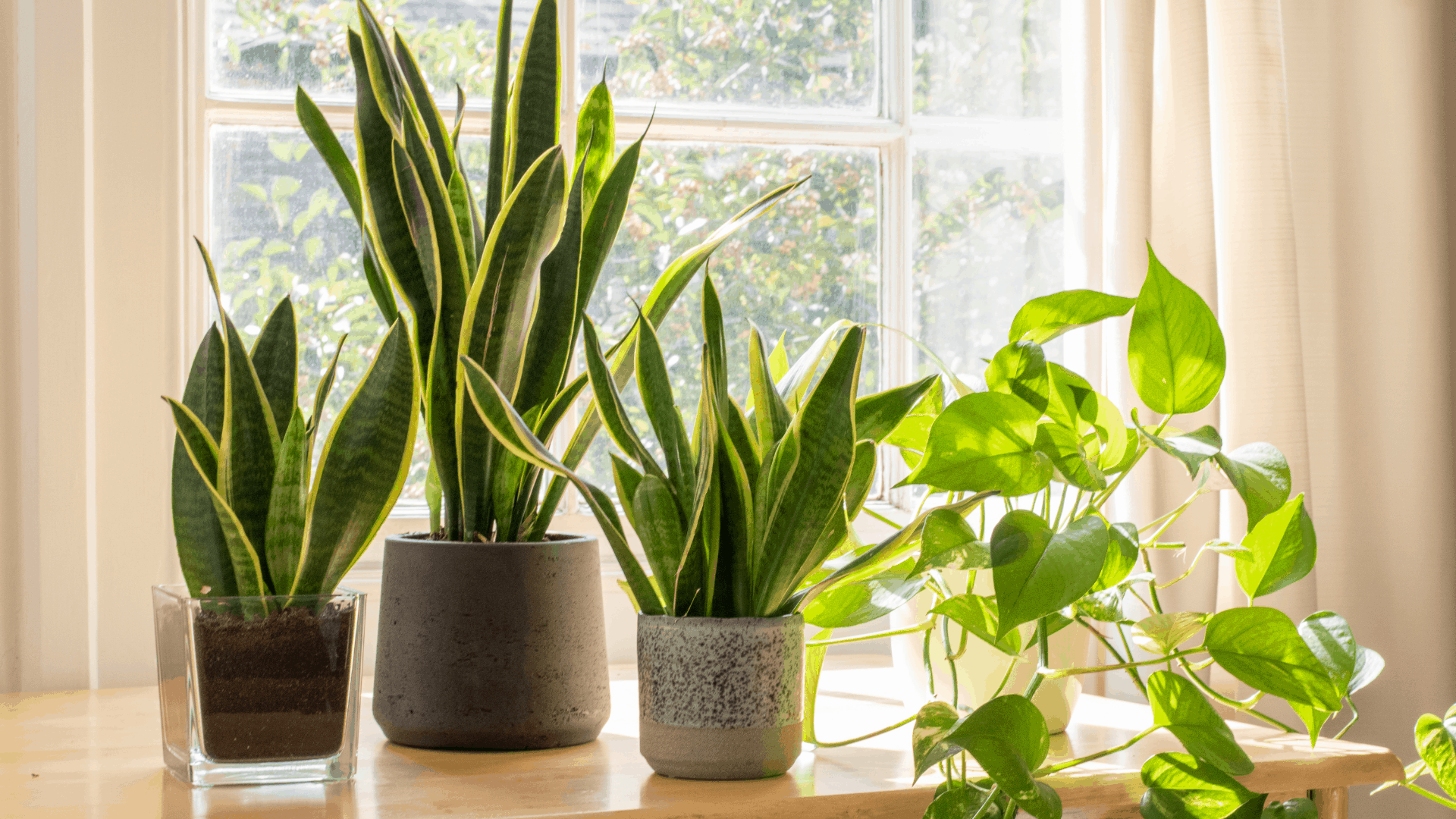
Everyone’s desire is to have a snake plant grow straight.
The erect leaves of the snake plants, which grow from 8 inches to 5 feet tall,
…are a remarkable aspect of the plant.
Unfortunately, many gardeners complain about their snake plant leaves falling down..
…or bending at unpredictable times.
Many folks are likewise perplexed as to why the snake plant leaves are tumbling over.
This problem can be caused by a variety of factors, including poor lighting,
…overwatering, and improper repotting techniques. It’s also worth noting that the snake plant stores water in its leaves.
As a result, if you fail to properly care for your snake plant, the leaves will fall over.
What can you do to make your snake plant grow straight?
Here’s how to get your snake plant’s leaves straightened, thanks to this post.
Here’s How to Keep Snake Plant Grow Straight!
To make the snake plant grow straight keep in mind….
….that the soil must be kept damp but not wet at all times.
To keep the leaves straight, you’ll need to be particularly careful when watering the plant.
When the earth is dry to the touch in 2” – 3” inches, you can water them.
The snake plants that are exposed to partial sunlight, on the other hand, require more frequent watering.
Water your snake plant once every 2–3 weeks and then stop…
….when the water flows out of the container’s drainage hole to make the snake plant grow straight.
During the winter, it is highly advised that you water your snake plant once a month.
Make sure the pot has drainage holes once more.
A fast-draining potting mix or standard potting soil coupled with coarse…
…or perlite added to a pot one size larger is recommended for snake plant care.
During the winter, it’s best to place the indoor plant in a southern window,
…while the rest of the year, an east-facing window would suffice.
If your snake plants have rotting roots, you can wash…
…and clip the rotten roots before repotting them in a fresh container with sufficient drainage.
Pruning is the best approach to keep the snake plant grow straight.
The drooping leaves must be trimmed. The snake plant, like most plants, requires pruning to get bushier.
It is possible to grow a snake plant as quickly as possible through prunning.
Aside from that, good pruning will give your snake plant the shape and size it deserves.
However, if you’ve never pruned your snake plant,
…it could be one of the main reasons for its stunted growth.
A little pruning, on the other hand, can make your plant grow bushier and healthier.
You should also refrain from fertilizing the pot until the roots have recovered their vitality.
Please do not fertilize them during their inactive periods.
A weak amount of suitable 10:10:10 fertilizer can be applied to your snake plant.
Make sure they don’t get too much fertilizer.
As a matter of fact, snake plant fans only fertilize this plant once a year…
…and will continue to do so for the next year.
Once the excess fertilizer has been flushed out, do not fertilize them for a month.
Causes Why Snake Plant Leaves Falling Over
Sansevieria, like all forms of succulent plants, holds water in its leaves.
Well, in its natural dry and stony environment, it will thrive.
These snake plants dislike wet feet and will develop root rot…
…if they are overwatered or if the soil is not well-drained.
Before replacing the pot on the drainage saucer,
…you should water around the inside edge of the pot to keep the leaves dry…
….and allow the pot to drain freely.
After you’ve watered them, wait until the top of the soil is dry before watering them again.
Only water your snake plant when the leaves begin to wilt. Once a month is usually sufficient.
Placing snake plants in regions with minimal light over lengthy periods…
…of time is another reason for their leaves to fall over.
Despite the fact that your snake plant will be incredibly tough…
….and develop well in the absence of direct sunlight,
…the prolonged absence of bright light…
…or exposure to harsh direct sunlight will cause your snake plant’s leaves to fall over.
It’s better to place your snake plant in indirect sunlight place.
If your snake plant doesn’t have any lighting or watering difficulties,
…the explanation for its leaves falling over could be rootbound, which can be caused by poor repotting.
It’s important to note that repotting them every 3 to 5 years..
..or putting them in a pot that’s too big will result in rotting roots.
The Damage Caused
Of course, there are a variety of reasons for your snake plant’s demise.
Falling snake plant leaves, on the other hand, indicate an underlying problem with your plant.
When snake plants’ roots are overwatered, they become damp…
…and thirsty for the nutrients and oxygen that they require from the soil.
Furthermore, decaying roots might affect the overall health of your snake plant…
…and can even spread to the better roots.
Aside from that, over-watering will cause fungus to grow in the poorly-drained soil,
…which will harm the roots.
Your snake plant’s roots are usually firm and black or light in color,
…whereas rotting roots become mushy, wet, and blackish-brown in color.
The snake plant leaves falling over is a telltale indicator of rot,
…even though the roots are still hidden.
Rootbound is a dangerous situation that your snake plant will develop.
When the roots of snake plants are constrained or bound by a barrier, this circumstance arises.
When your snake plant’s pot becomes too tiny for it, you can begin to stifle healthy new growth.
If you’re growing them outside, you can create barriers with footers, walls, or pipelines.
As a result, the snake plant leaves will fall over.
Avoid the fall down of snake plant leaves by read our recent article : Best Way To Avoid Broken Snake Plant Leaves.
Frequently Asked Questions
What are the best potting soil and fertilizers for snake plants?
The best potting soil and fertilizers for snake plants are the same as the best potting soil and fertilizers for other house plants: regular potting soil, a balanced fertilizer, and water.
What should I do if my snake plant starts to droop or wilt?
If your snake plant droops or wilts, the most likely cause is dehydration. If you can’t solve the problem of the drooping or wilting, then you may need to repot the plant.
Why is it important to keep my snake plant tall and straight?
Keeping the snake plant tall and straight will help the plant grow healthier and emit more oxygen.
How do I prevent my snake plant from becoming diseased?
You can prevent your snake plant from becoming diseased by watering it properly, fertilizing it regularly, and removing any dead leaves.
How can I tell if my snake plant is getting too big for its pot?
The best way to tell if your snake plant is getting too big for its pot is to check the size of the leaves. If the leaves are growing larger than the pot, the plant may need a new pot.

